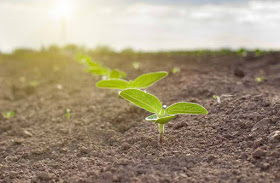by Jake Piel, Sustainability Manager, Novus International
First published in Milling and Grain, November 2015
Agricultural production systems are adapting operations to meet the increasing demand for wholesome and affordable food. Attention has focused on the long-term impact on ecosystems of both crop and animal production. With reference to animal agriculture, concerns have been expressed about the concentration of minerals in manure and its subsequent effect on soil mineral content and phytotoxicity.
The US Environmental Protection Agency has placed some metals such as copper (Cu), nickel (Ni) and zinc (Zn) on their list of priority pollutants, as they are considered among the most toxic elements in the environment when improperly managed. Trace minerals cannot be degraded through chemical or biological processes, and therefore remain in the soil for long periods of time.
The benefits of supplementing copper, zinc and manganese in animal feed are critical to animal health and wellbeing, as well as overall production and performance improvements. For example, pork producers supplement diets with copper for enteric benefits. A swine study has shown injected copper could result in a 19.8 percent increase in weight gain and 16.9 percent improvement in feed conversion. These benefits, along with 9.4 percent improvement in loin muscle weight relative to live body weight, underscore the role of available copper in grow/finish pigs.
Read the full article in Milling and Grain HERE.
First published in Milling and Grain, November 2015
Agricultural production systems are adapting operations to meet the increasing demand for wholesome and affordable food. Attention has focused on the long-term impact on ecosystems of both crop and animal production. With reference to animal agriculture, concerns have been expressed about the concentration of minerals in manure and its subsequent effect on soil mineral content and phytotoxicity.
The US Environmental Protection Agency has placed some metals such as copper (Cu), nickel (Ni) and zinc (Zn) on their list of priority pollutants, as they are considered among the most toxic elements in the environment when improperly managed. Trace minerals cannot be degraded through chemical or biological processes, and therefore remain in the soil for long periods of time.
The benefits of supplementing copper, zinc and manganese in animal feed are critical to animal health and wellbeing, as well as overall production and performance improvements. For example, pork producers supplement diets with copper for enteric benefits. A swine study has shown injected copper could result in a 19.8 percent increase in weight gain and 16.9 percent improvement in feed conversion. These benefits, along with 9.4 percent improvement in loin muscle weight relative to live body weight, underscore the role of available copper in grow/finish pigs.
Read the full article in Milling and Grain HERE.
The Global Miller
This blog is maintained by The Global Miller staff and is supported by the magazine GFMT
which is published by Perendale Publishers Limited.
For additional daily news from milling around the world: global-milling.com


No comments:
Post a Comment